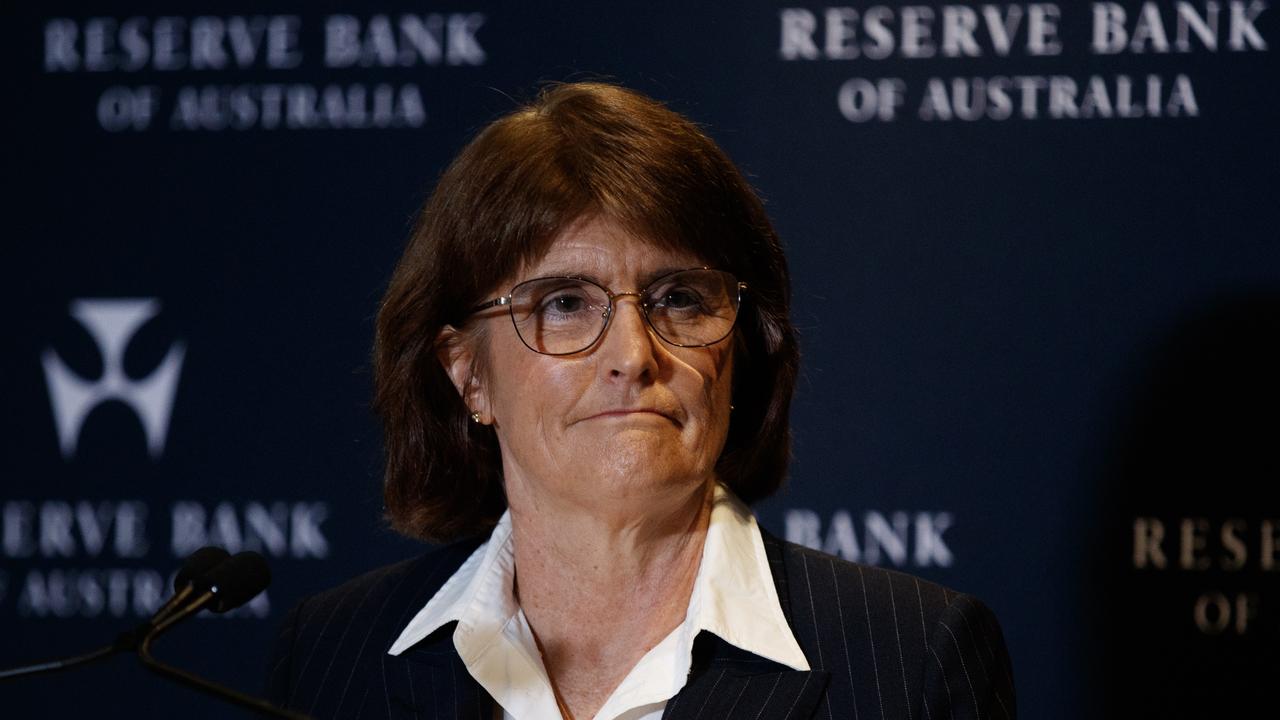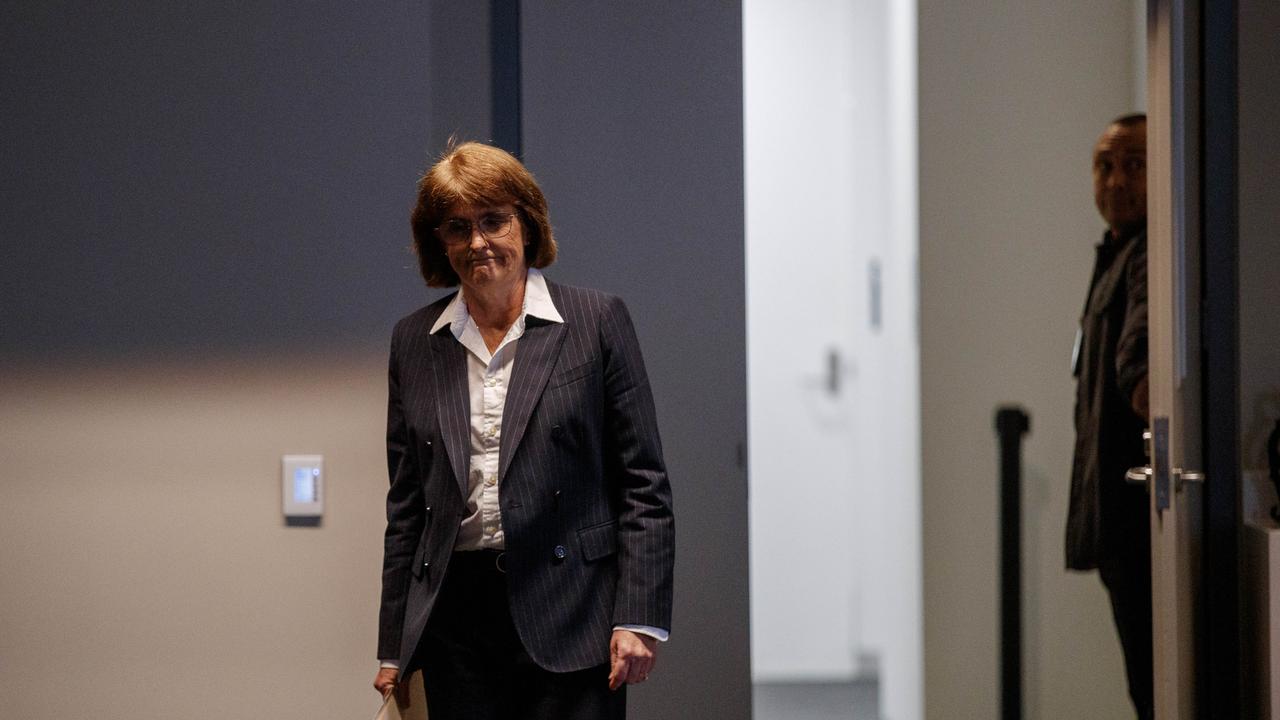RBA pushes back on deep rate cuts, but growth data may cause ‘headache’, economists say
The Reserve Bank has subtly pushed back on the possibility of deep interest rate cuts, but national accounts data could test its economic recovery narrative.

Business
Don't miss out on the headlines from Business. Followed categories will be added to My News.
The Reserve Bank board has subtly pushed back on the possibility of deep interest rate cuts, saying that if it had done a larger cut recently it would have been a case of front-loading against “more adverse scenarios” from the trade war. And not a sign that the cash rate should be lower than the path it has assumed.
Although board members including governor Michele Bullock considered an unusually large cut of 50 basis points at their meeting last month, they said it “would be important that a larger reduction at this meeting should not be taken as implying a view that the cash rate path should be lower over the entire forecast period, merely that it reaches the same level sooner to provide greater insurance against more adverse scenarios.”
After inflation finally returned to its 2-3 per cent target and it “considered the possibility of a severe downside scenario” due to the trade war – the RBA decided that the case to cut the cash rate target by 25 basis points to 3.85 per cent was “the stronger one” last month.
However, members observed that “trends in domestic conditions could, on their own, justify some degree of reduction in the cash rate target at that meeting, and “developments in the global economy since the previous meeting strengthened the case for a reduction in the cash rate target.
The RBA board said the rise in global tariffs and increase in policy uncertainty had “adversely changed the outlook for growth in Australia’s major trading partners”, but it was “difficult to quantify the impact of this on Australian activity at this early stage, while international trade policy was still in flux.”
But they were expecting a negative impact and saw “scenarios in which output growth could be materially weaker.” Tariffs could lift Australian inflation through impaired supply chains, but it was “more likely that they would prove to be disinflationary, through weaker aggregate demand.”
The minutes said the RBA board “assessed monetary policy to be still somewhat restrictive at the current level of the cash rate”, although “the extent of that restrictiveness was subject to considerable uncertainty”. That assessment was presumably made before they decided to cut rates.

“The RBA thinks it is close to neutral,” said ANZ head of Australian economics, Adam Boyton.
“A more aggressive easing cycle would occur if downside scenarios for the global and domestic economies materialise rather than the Board choosing to pre-empt them.”
The minutes also said the board preferred to “move cautiously and predictably when withdrawing some of the current policy restriction” due to “prevailing global policy uncertainty”.
Board members noted that there was an “absence of signs in the Australian data to date that global trade policy uncertainty was having a significant negative impact on the economy, and that some plausible adverse scenarios could see upward pressure on inflation.”
They also judged that it was “not yet time to move monetary policy to an expansionary stance, taking account of the range of estimates involved, given that inflation was yet to return sustainably to the midpoint of the target range and the staff’s assessment that the labour market was still tight.”
Citi senior economist Faraz Syed said Wednesday’s national accounts data may cause a “headache” for the central bank as economic growth is likely to have been weaker than it forecast before US President Donald Trump ramped up the trade war with tariff increases in April.
Government spending on capital equipment fell by 2 per cent in the March quarter, while overall government consumption was flat versus the December quarter.
“This means that the public sector will not contribute positively to economic growth for the first time since Q322,” Mr Syed said. “Net-exports will subtract 0.1 percentage point from growth.
He said the only segment that will contribute is inventories, thanks to higher mining, manufacturing and public stocks. Inventories could add 0.3 percentage points to growth, but Citi sees a smaller growth contribution as farm inventories are expected to be negative.
“This leaves our working estimate of Q1 GDP growth at 0.2 per cent … half that of the RBA’s implied 0.4 per cent forecast,” Mr Syed said.
“To some extent, the debate over a 25 versus 50 basis points cut in May has been overtaken by the run of soft activity data seen since then,” said NAB head of market economics, Tapas Strickland.
The minutes noted there were downside risks to the outlook stemming from the domestic economy, including that household consumption doesn’t pick up as fast as expected.
“Those downside risks appear to be being realised as April retail sales fell 0.1 per cent on-month and the partial indicators for Q1 GDP look like they will give a Q1 GDP print that is materially weaker than the RBA’s forecast,” Mr Strickland said.
Although a bit higher than expected, a 3.5 per cent increase in the national minimum wage announced by the Fair Work Commission decision versus 3.75 per cent for FY25 was “consistent with moderation” in wage inflation” according to Westpac.
Originally published as RBA pushes back on deep rate cuts, but growth data may cause ‘headache’, economists say







